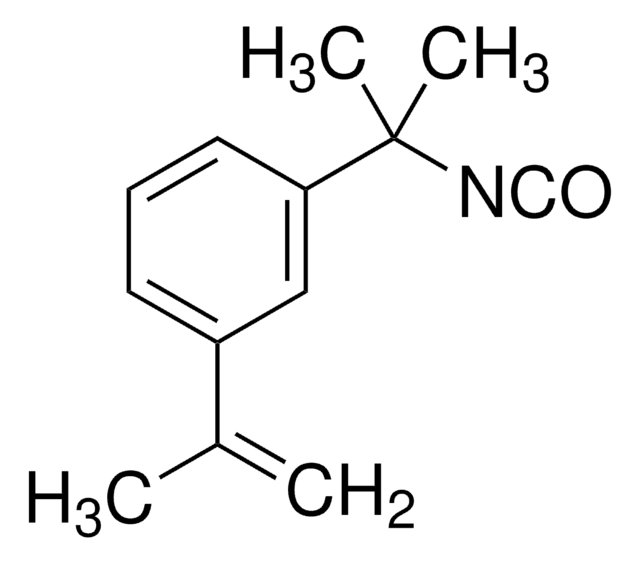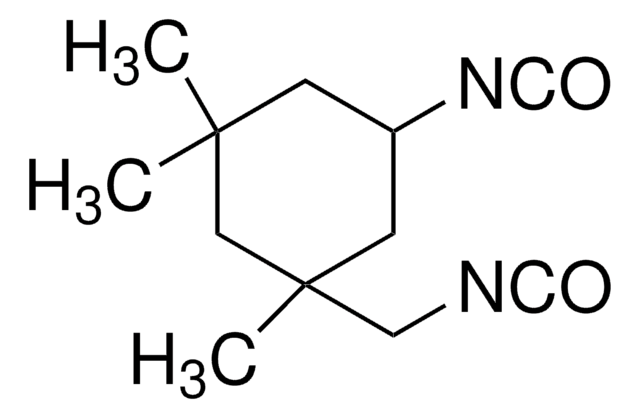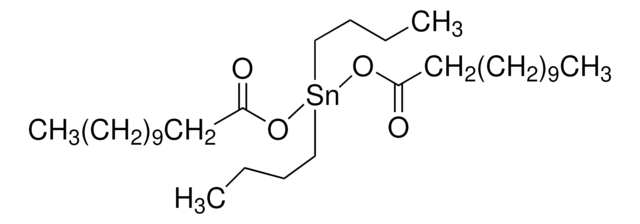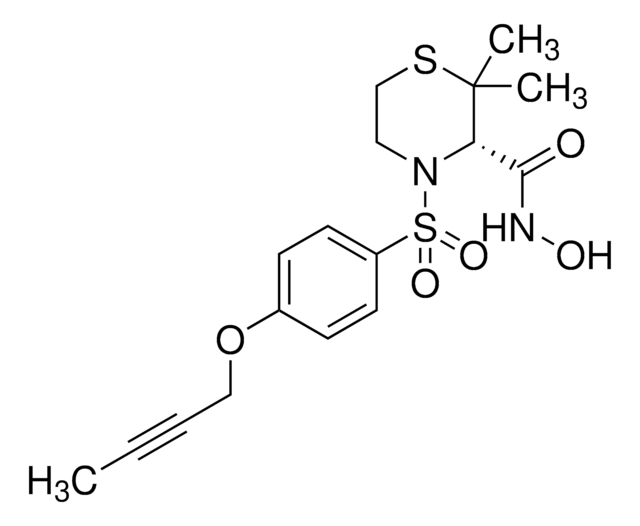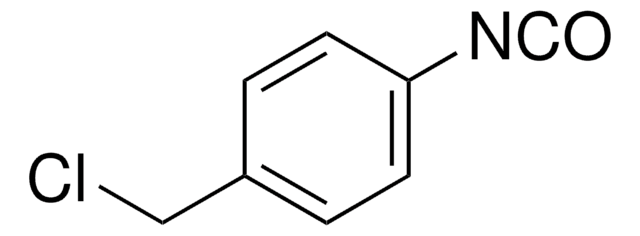477060
2-Isocyanatethylmethacrylat
contains ≤0.1% BHT as inhibitor, 98%
Synonym(e):
2-(Methacryloyloxy)-ethylisocyanat
About This Item
Empfohlene Produkte
Assay
98%
Enthält
≤0.1% BHT as inhibitor
Brechungsindex
n20/D 1.45 (lit.)
bp
211 °C (lit.)
mp (Schmelzpunkt)
−45 °C (lit.)
Dichte
1.098 g/mL at 25 °C (lit.)
Lagertemp.
2-8°C
SMILES String
CC(=C)C(=O)OCCN=C=O
InChI
1S/C7H9NO3/c1-6(2)7(10)11-4-3-8-5-9/h1,3-4H2,2H3
InChIKey
RBQRWNWVPQDTJJ-UHFFFAOYSA-N
Suchen Sie nach ähnlichen Produkten? Aufrufen Leitfaden zum Produktvergleich
Allgemeine Beschreibung
Anwendung
- A reactive monomer in the synthesis of poly(methyl urethane) acrylate oligomer for UV-curable coatings. By incorporating urethane and acrylate groups into the polymer, it enables the polymer to be utilized in UV-curable coatings, inks, and adhesives.
- An additive in propylene carbonate-based electrolyte to enhance its properties, such as viscosity, conductivity, and stability. This improves the overall performance of the electrolyte and the battery.
- As a modifier in the copolymerization process to prepare a bioprosthetic heart valve, which is used in the application of transcatheter aortic valve replacement.
- A latent cross-linker for adhesive resins and coatings.
Signalwort
Danger
Gefahreneinstufungen
Acute Tox. 1 Inhalation - Acute Tox. 4 Oral - Eye Dam. 1 - Resp. Sens. 1 - Skin Irrit. 2 - Skin Sens. 1
Lagerklassenschlüssel
6.1A - Combustible acute toxic Cat. 1 and 2 / very toxic hazardous materials
WGK
WGK 3
Flammpunkt (°F)
210.2 °F - closed cup
Flammpunkt (°C)
99 °C - closed cup
Hier finden Sie alle aktuellen Versionen:
Besitzen Sie dieses Produkt bereits?
In der Dokumentenbibliothek finden Sie die Dokumentation zu den Produkten, die Sie kürzlich erworben haben.
Kunden haben sich ebenfalls angesehen
Unser Team von Wissenschaftlern verfügt über Erfahrung in allen Forschungsbereichen einschließlich Life Science, Materialwissenschaften, chemischer Synthese, Chromatographie, Analytik und vielen mehr..
Setzen Sie sich mit dem technischen Dienst in Verbindung.
